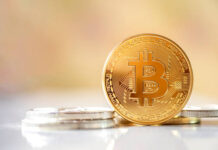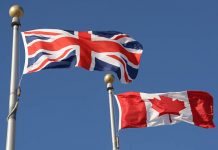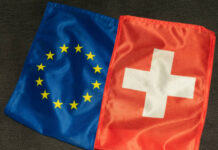Markets
Fed Chair Powell in front of the US Senate as expected said that the ultimate peak interest rate level would be higher than expected in December (5-5.25% median projection in the dot plot). Less expected was the other bomb he dropped: showing readiness to speed up rate hikes again if warranted by the data. Stronger January data and the bumpy inflation data ahead could be the key. We warned for quite some time that the Fed in March would have to revert to a 50 bps rate hike, a scenario US money markets are now attaching a 1/3 possibility to. The US yield curve turns more inverse with yields rising by 2.7 bps (30-yr) to 7.4 bps (2-yr). The dollar profits with EUR/USD losing 1.06 again. US stock markets lose around 1% in a first move.
Ahead of Fed Chair Powell’s testimony before US Senate, another central banker grabbed headlines with some interesting comments on Bloomberg. The lady in question was not ECB President Lagarde, but Bank of England policy maker Catherine Mann, amongst the more hawkish members on the BoE-board. She argued that the UK central bank needs to push hard on rates as the traditional transmission mechanism is hampered by the volume of long-term, fixed loans by companies and households during (and ahead) of the Covid-period. As a result, interest rate increases we are seeing today are not really hitting the economy, she says. Another argument is concern about the extent to which there is strong pricing power among firms and acceptance of those price rises by a lot of consumers. Worries about diminishing labour supply in the wake of Covid and brexit (end UK-EU freedom of movement) add to her personal inflation outlook. The return to a small and open economy following brexit implies as well that it will be tough to grow without creating inflation. Mann still thinks that there’s more to go for the UK central bank with the terminal rate still “beyond the forecast horizon”. It’s unclear whether the latter means a preference to hold rates until 2025. Her reference to sterling suggests that she’ll lose out against the more dovish majority under BoE-governor Bailey’s wings. Mann fears that sterling could fall further given the hawkish tone coming from the Fed and the ECB, especially if it turns out that this hawkishness isn’t completely discounted yet. Sterling is a tad softer today, but testing the psychologic EUR/GBP 0.89-mark again. UK Gilt yields follow the global move today, sliding 2.4 bps (2-yr) to 8 bps (30-yr). UK money markets currently discount three additional 25 bps rate hikes at the March, May and June or August policy meetings with the terminal rate then being 4.75%.
News Headlines
South-African GDP contracted by 1.3% Q/Q in the fourth quarter of last year, resulting in activity only being 0.9% higher compared to the same period in 2021. The decline follows 1.8% Q/Q and 4.2% Y/Y growth in Q3. The decline was much more pronounced than analysts expected. Economic growth for the whole of 2022 slowed to 2% compared to 4.9% in 2021. Electricity blackouts probably were an important factor behind the poor economic performance. According to Statistics South Africa, seven of the ten industries contracted in Q4. The finance, real estate & business services industry shrank by 2,3%. As this sector is the largest in the economy, the decrease was the biggest factor behind the decline in GDP, subtracting 0,6 ppt from GDP growth. Trade, catering and accommodation subtracted 0.3 ppt. Transport and communication, construction and personal services where the only sectors to make a (marginal) positive contribution. The 2-y swap rated declined 6 bps after the release. The rand loses about 0.75% with USD/ZAR trading at 18.41, near recent YTD peak levels in the 18.51/58 area.
Perceived inflation over the previous 12 months eased in the ECB’s monthly consumer expectations survey to 9.5% in January from 9.9%. Median expectations for inflation in the year ahead slowed slightly from 5.0% to 4.9% but expectations for three years ahead declined sharply from 3.0% to 2.5%. Consumers expect nominal income to grow by 1.3% over the next year, but expectations on spending moderated from 4.2% to 3.8%. Expectations on economic growth turned less negative (-1.2% from -1.5%) and this also caused expectations for the unemployment rate to ease from 11.9 to 11.6%. Current unemployment rate is perceived at 11.3%. Consumers expect growth in the price of their home to slow to 2.5% down from 3.0%.












